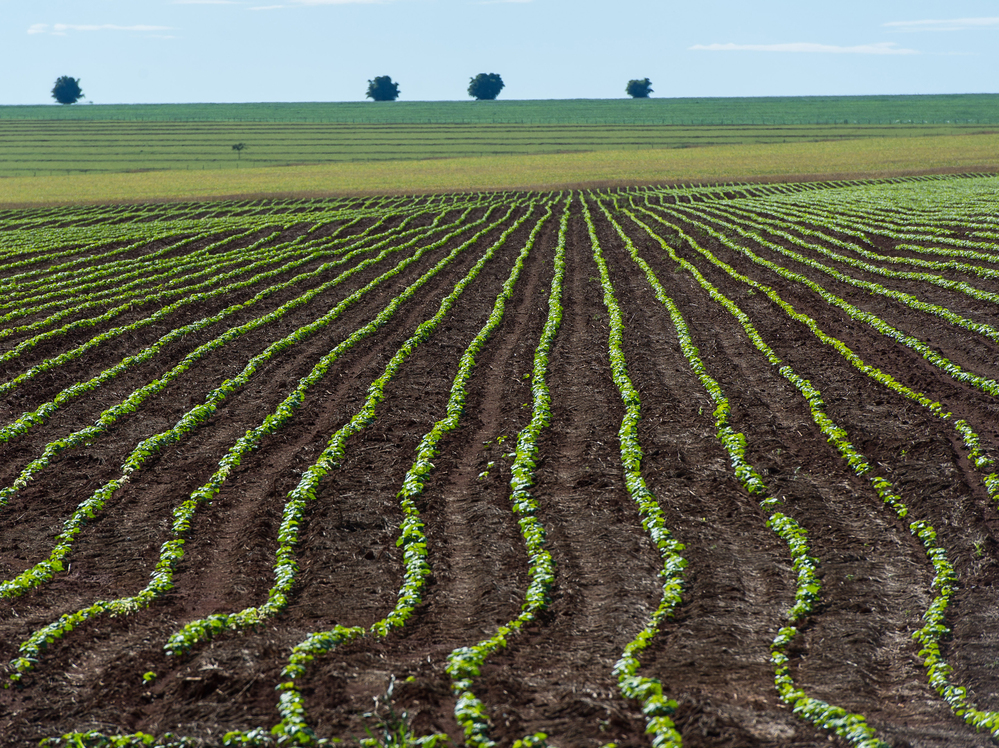 Enlarge image i
Enlarge image i A soybean field near Campo Verde in western Brazil in January 2011. Researchers argue that enough arable land is already under cultivation to feed the planet for the next several decades.

A soybean field near Campo Verde in western Brazil in January 2011. Researchers argue that enough arable land is already under cultivation to feed the planet for the next several decades.
If you're looking for a dash of optimism about the future and who isn't, these days? you can find it in a rosy new prediction about the planet's ability to produce food for the next half-century.
It comes to us from a trio of researchers at Rockefeller University. Their bottom line: We have more than enough land to grow all the food that the world's increasing population will desire. In fact, farmers' ability to grow more food on less land will even outrun demand for that food, and farmers will abandon land once used to grow crops.
As the researchers put it, "we are confident that we stand on the peak of cropland use, gazing at a wide expanse of land that will be spared for Nature." Globally, they predict that farmers will release an area bigger than Egypt, or the equivalent of ten Iowas.
Now, before you go and cross off "food supply" from your list of things to worry about, I must tell you that some other crystal balls show a darker vision of the future. The United Nations' Food and Agriculture Organization, for instance, thinks that feeding humanity in 2050 will require farmers to grow crops on an additional quarter of a million square miles, or five Iowas. There are even scenarios that show agriculture gobbling up natural ecosystems equal in size to the entire U.S.
What produces such wildly different visions of the future? Basically, it comes down to a few key assumptions about supply and demand for food.
The Rockefeller group, for instance, says that demand for meat, and in particular, beef, is not increasing as quickly as some have predicted. Chinese are eating more meat as they get richer, but they are not duplicating the meat-heavy diets of many other countries.
The single most important assumption, however, concerns farmers' ability to increase the amount of food they can grow from each acre of land. The Rockefeller University group assumes that farmers will continue to increase their crop yields at roughly the same pace as they have since 1961 some 1.7 percent per year. Others, like the FAO and the International Food Policy Research Institute, don't believe that's likely. Yield increases have been much lower about 1.2 percent per year over the past 20 years. And that's before one even considers the impact of the climate change, which could be devastating for some regions.
Jesse Ausubel, who led the Rockefeller group, says that it's "arrogant" and "peculiar" to assume that the world's farmers cannot increase their productivity rapidly, if needed. Large gains in crop yields haven't been needed over the past two decades, he says, because food has been relatively abundant.
In fact, Ausubel says, the expansion of crop lands strictly for food production ended twenty years ago; additional land was taken, however, to satisfy the demand for biofuels. But Ausubel expects that expansion to end, too.
No comments:
Post a Comment